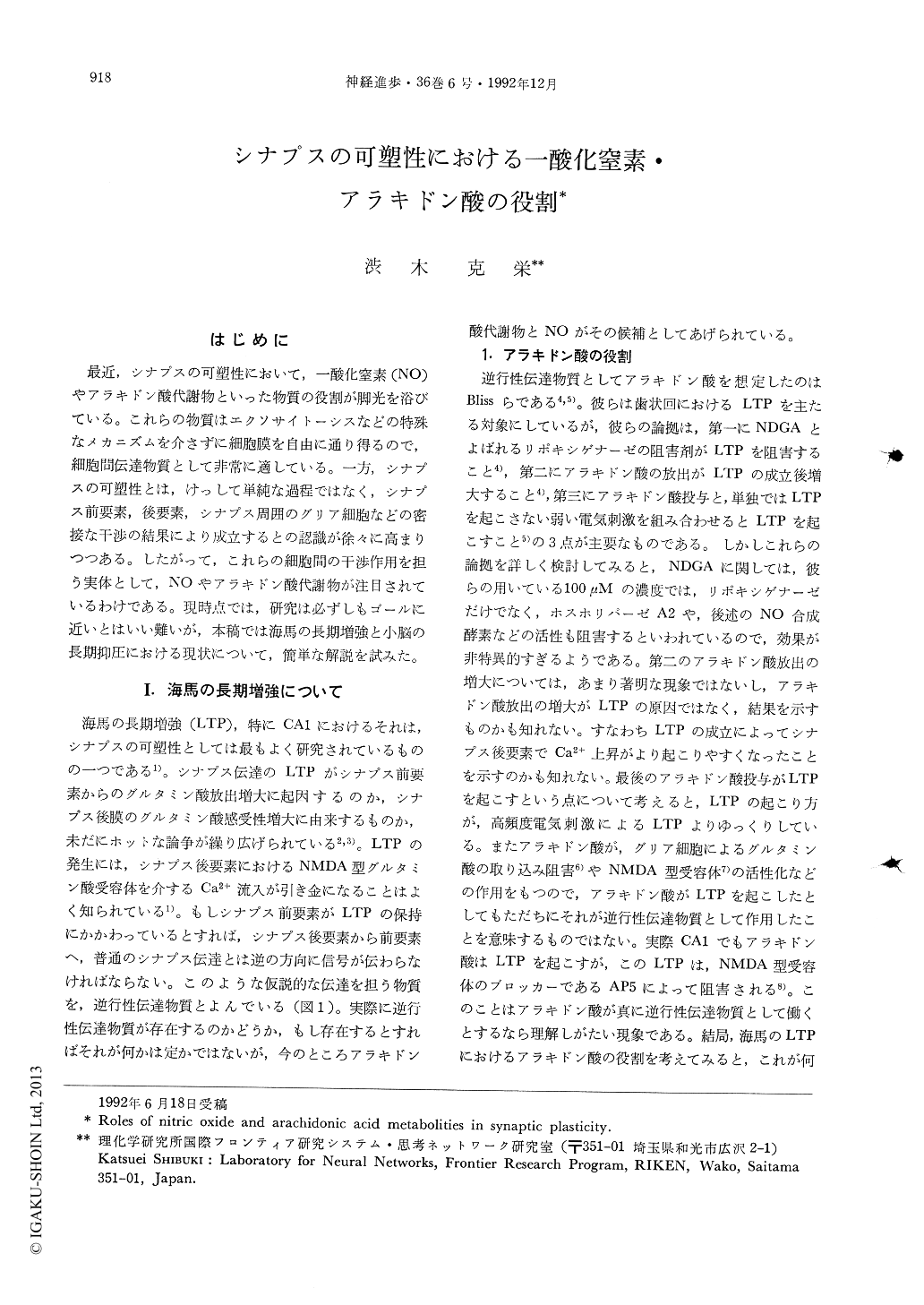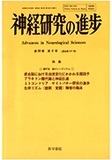Japanese
English
- 有料閲覧
- Abstract 文献概要
- 1ページ目 Look Inside
はじめに
最近・シナプスの可塑性において,一酸化窒素(NO)やアラキドン酸代謝物といった物質の役割が脚光を浴びている。これらの物質はエクソサイトーシスなどの特殊なメカニズムを介さずに細胞膜を自由に通り得るので,細胞間伝達物質として非常に適している。一方,シナプスの可塑性とは,けっして単純な過程ではなく,シナプス前要素,後要素,シナプス周囲のグリア細胞などの密接な干渉の結果により成立するとの認識が徐々に高まりつつある。したがって,これらの細胞間の干渉作用を担う実体として,NOやアラキドン酸代謝物が注目されているわけである。現時点では,研究は必ずしもゴールに近いとはいい難いが,本稿では海馬の長期増強と小脳の長期抑圧における現状について,簡単な解説を試みた。
Recently, membrane-permeable substances such as nitric oxide (NO) and arachidonic acid meta-bolites attract our attention because these can work as inter-cellular messengers in the brain. Synaptic plasticity is one of the phenomena where intercellular-messengers may play important roles. In this paper, possible roles of these substances was explained in two different types of synaptic plasticity, hippocampal long-term potentiation (LTP) and cerebellar long-term depression (LTD).
If maintenance of hippocampal LTP is attributed to sustained increase of glutamate release from presynaptic nerve terminals, effect of postsynaptic Ca2+ rise, which triggers LTP, must be transferred to presynaptic terminals by some membrane-permeable substances. Such hypothetical substances are calledas retrograde messengers and arachidonic acid metabolites and nitric oxide are the candidates.

Copyright © 1992, Igaku-Shoin Ltd. All rights reserved.


